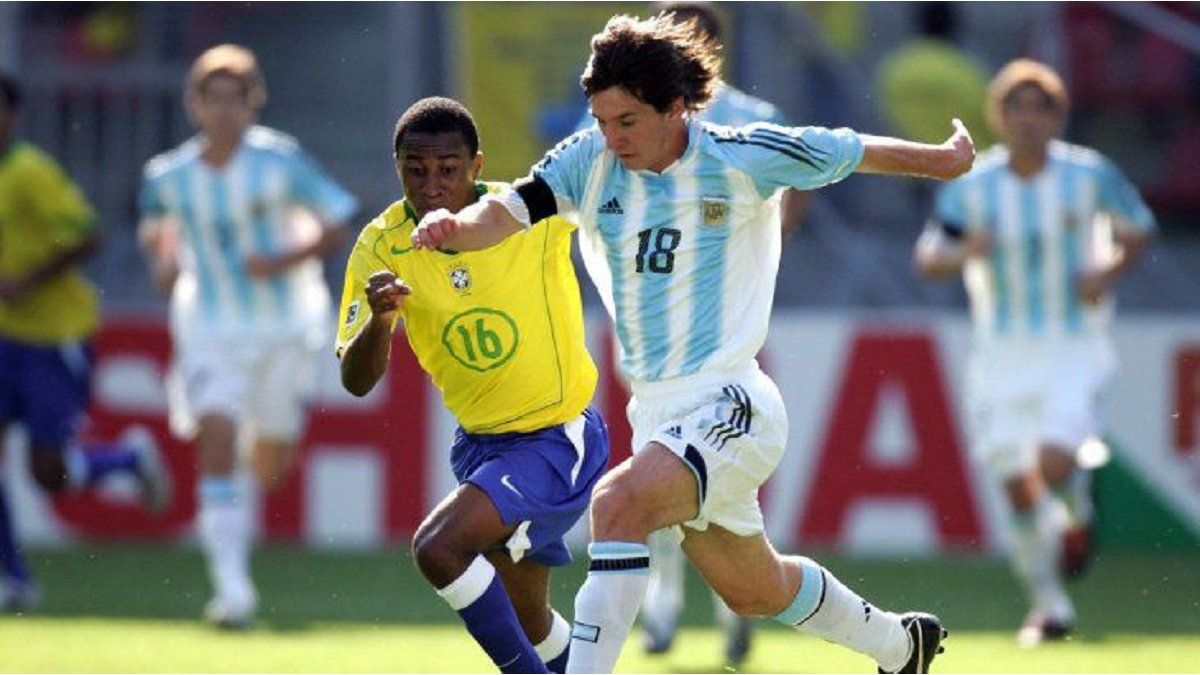Image: OON
No long neck sticking out of the water. Rather, an elongated body that stirs up water. The image is black and white and grainy – and it triggered what is probably the most famous monster hunt in the world. Because the snapshot is said to be the first photo of “Nessie”. This Sunday (November 12) marks 90 years since a man named Hugh Gray pulled the shutter on the banks of Loch Ness.
“Even 90 years later, it is one of the clearest photos we have,” says “Nessie” expert Roland Watson. He has been studying the phenomenon from the Scottish Highlands for years and has written several books about it. Watson has studied Gray’s photo meticulously in several articles and blog posts. It is not a fake and shows an animal creature; a head can be seen on the right side. For Watson it has been clear for years: “I believe that the photo shows the Loch Ness monster.” And adds: “I say, ‘I believe’, not ‘it is’.” But Gray was neither a liar nor a fraud; rather, his contemporaries described him as a respected and honest person.
- more on the subject: Largest search for Nessie in decades planned at Loch Ness
First “Nessie” sighting in modern times
Only six months earlier, the story of “Nessie” had first spread around the world. The local newspaper “Inverness Courier” printed the descriptions of hotel manager Aldie Mackay, who claimed to have seen a whale-like “monster” – the first “Nessie” sighting in modern times. So the elongated lake in the Scottish Highlands was already under observation when Gray strolled along the shore after church on a sunny Sunday.
He told the Daily Record newspaper a few weeks later: “Not far from where I was staying an object of considerable size rose from the water. I immediately prepared my camera and photographed the object, which was two to three feet above the surface of the water .” He couldn’t see a head, but there was a lot of movement from what looked like the tail. “The object only appeared for a few minutes and then disappeared from view,” Gray reported.
Loch Ness is huge
Expert Watson doesn’t believe that “Nessie” is a friendly plesiosaur, which is what the monster is usually portrayed as on advertising and tourism posters. The most famous “Nessie” photo, in which a dinosaur-like neck sticks out of the water and which was published by the “Daily Mail” in 1934, has long since turned out to be a fake. But Loch Ness is huge. The Scottish lake with the most water in the Highlands stretches 36 kilometers long, up to 2.7 kilometers wide and 230 meters deep.
Watson and Steve Feltham, who has lived at the lake for 32 years and holds the world record for the longest “Nessie” search, are sure that there is something mysterious in Loch Ness. But what can be seen in Gray’s picture? Watson rejects theories about a Labrador. He compared the photo, among other things, with pictures of a swimming dog and, according to his own account, discovered several discrepancies. Is it a huge fish, like an eel? Or a seal? Watson thinks he sees “something turtle-like.”
1155 official sightings
The “Official Register of Sightings of the Loch Ness Monster” currently counts 1,155 reports, the first of which comes from the monk Columbanus in 565 AD. Nine have already been added in 2023 alone. The most famous images can be seen in the interactive Loch Ness Center in Drumnadrochit. The town on the west coast of the lake is considered the center of “Nessie” tourism. “At the Loch Ness Center we love hearing about these Nessie encounters, which contribute to the phenomenon that has more than 1,000 eyewitness accounts and sightings, as well as many unexplained clues,” says museum director Paul Nixon.
90 years after Aldie Mackay’s descriptions and Hugh Gray’s photo, the fuss surrounding “Nessie” is immense. At the end of August, the “Telegraph” published pictures taken by amateur photographer Chie Kelly, an avowed “Nessie” fan, in 2018. Several small hills can be seen rising out of the water, leaving slightly rippled waves on the surface. World record holder Feltham spoke of the “most exciting surface images I have ever seen”.
So far no proof of existence
Ultimately, however, caution is advised. Many interpretations, says expert Watson, could be due to pareidolia – the tendency for people to believe they see a form or meaning in an ambiguous image, but it doesn’t actually exist. After all, many tourists arrive expecting to see a monster in Loch Ness. Any unexpected movement in the water can quickly become “Nessie”.
To date, however, there is no evidence of an ancient creature or monster in the lake. It was only at the end of August that no traces of a larger animal were found during a major search using a highly sensitive hydrophone, a type of underwater microphone. “For being a famous creature sought by an army of investigators for nearly a century, she is proving unpleasantly elusive,” commented the Telegraph.
My themes
For your saved topics were
new articles found.

info By clicking on the icon you can add the keyword to your topics.
info
By clicking on the icon you open your “my topics” page. They have of 15 keywords saved and would have to remove keywords.
info By clicking on the icon you can remove the keyword from your topics.
Add the topic to your topics.
Source: Nachrichten




